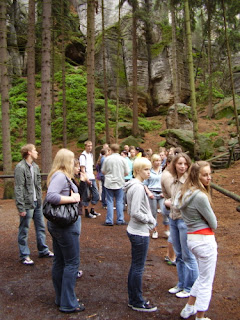- the United Nations in September 1991,
- the International Monetary Fund in April 1992,
- the World Bank in June 1992,
- the World Trade Organization in November 1999,
- the Eurovision Song Contect winners in 2001,
- the European Bank for Reconstruction and Development (EBRD) in 2002,
- the North Atlantic Treaty Organization in March 2004, and
- the European Union in May 2004.
According to the EBRD, Estonia is one of the most open and competitive economies in the world (with its households average monthly disposable income at $300). Time magazine called Estonia one of the most technologically advanced places on the planet, because you can use your mobile phone to buy bus tickets, check your child's grades at school, and pay for parking for your car. A Korean news agency recognized Estonia as a model for developing countries because of its excellent Internet infrastructure and its people's liberal and open mindset. So...
- Why does the Estonian postal service use stamps in denominations no greater than 20EEK to put 392EEK worth of postage on my packages to the United States? Yes, that's a minimum of 15 stamps stuck in the upper right-hand corner of the box and across the top and down the side.
- Why does Edelaraudtee, Estonia's national passenger rail service, bounce me up and down on wooden benches for the 90-minute ride to and from Tallinn?
- Why do Estonian municipalities make sidewalks with rocks, stones, pebbles, gravel, sand, and dirt? Why don't they automatically use concrete or asphalt?
- Why can't I buy a four-pack of beer in every grocery store in Estonia? Why do I have to buy four individual bottles and listen to them clanking around in my plastic bag as I walk home?
- When will Estonians learn how to stand in a queue as well as understand that the queue grows longer from the end, not wider from the middle, as more and more people join it?
You just can't assume - I'm really saying Don't assume! - that because Estonia has reached point J, for example, that it has got points A through I under its belt. While a mother can check her child's grades any time she wants as long as she is in front of a computer with Internet access, I must, on the other hand, stand at the counter at the post office while the unbelievably patient service clerk looks for 15, 20EEK stamps (plus 9, 10EEK stamps, and 2, 1EEK stamps), rings each denomination up separately on the register, and then puts the stamps (and, in fact, must still moisten the back of some) on the package!
While Estonia is spending 1,200,000,000EEK (more than a million dollars) to build a new concourse at the airport in Tallinn, I must, on the other hand, take a stock car on pentagonal wheels to Tapa. And, yes, I can get a free WiFi connection in a park in Tapa, but, after a good rain, the pebble paths in the park are flooded with a series of puddles, because they are paved with cement or asphalt or decorative brick, god forbid.
My friend Oleg (above), whom I worked with at MTÜ Arenduskoda when I was in the U.S. Peace Corps here from 1998 to 2000 and who is knowledgeable in all things with electronic chips, hit me on the head one day at Ülemiste Mall with this revelation. If I had read the Time magazine article about Estonia's technological innovations in Chicago, I would have assumed that Estonian society had evolved as a whole to the point that made it not only possible but simple to purchase bus tickets with mobile phones - that almost everyone had mobile phones, that public transportation was fast and efficient, and that most Estonians used it in commuting to and from home, as I said, that by getting to point J, points A through I had been mastered.
In truth, I believe, the advancements of which the world takes note are not the sign of a winning team but merely anecdotes about a couple of victories in an otherwise frustrating season - that while Estonia may be at point J, it may have skipped point B, ignored point E, and still be working on points G and H. How can parents check their children's progress at school on the Internet when the children themselves do not have a computer to do their homework?











 Karlštejn
Karlštejn























